Text
Story Building
How are stories built? There are structures out there you can use like "Chase the cat up a tree" or "The Hero's Journey." There are character sheets and questionnaires. There are beat sheets and instructions and rules.
But there is no one way! There are no rules. If you don't follow a set structure, that doesn't mean anything bad will happen or your story won't work or you'll never be able to publish it. There are plenty of books out there that didn't follow an established, rigid series of steps.

There are ways of understanding story and its construction that do not dictate the form your story takes. Principles that underpin those processes and methods that are put forward to writers. Ideas that apply to whatever methods you prefer, or whatever you come up with yourself.
This article explores these principles, and how structures and stories and worlds can come from just a couple of simple concepts.
I have demonstrated these methods using the TV show Andor as a guide. So you can see how we can go from a seed of an idea, into a story, and how it could be developed into a final story. Read that for free on Medium.
Motivated Details
I am a discovery writer. A "write by the seat of your pants"-er. A "gardener." I prefer to build the world, the characters, and the plot as I write the story itself.
Note, the principles discussed will be applied for outline writers too, so stick with me for a minute...
That doesn't mean I don't think about how it's all coming together, how things interrelate, how the story is structured. I just don't do so ahead of time.

Most discovery writers simply do that as part of the editing process. Though, in my own process I keep track of what I've built in the prose by keeping a worldbuilding document just as any outliner would.
While writing I might feel like a new character should be in the scene, so I write about them doing things and interacting with my viewpoint character. Then after the writing session is done, I skip over to the worldbuilding doc and add the character in there--including what I've established about them in the story, and perhaps expanding on it a little bit. And I do this for any new details or ideas that came into my head while writing.
Why do I do this? So that I can bring them back later. I can work them into other parts of the story.
Most discovery writers may not do this part. But they still have the story floating around in their heads. And new ideas for what can happen next is based on what happened before. So it seems their minds are working like this as they write even if they aren't specifically taking notes to facilitate it.
There is a principle put forward by Russian writer Anton Chekhov, to playwrights: If you hang a gun over the mantle in act 1, it'd better go off by act 3. Because if something as evocative and heavy with intent as a gun doesn't go off--or more generally play a part in the story in some way--then why hang it over the mantle in the first place? Why even bring up the gun?

Think about it like this... the writer has full control over what is in their story and what is not. What is described and what is not. Writing that a gun hangs over the mantle is a creative choice they made. Why did they make that choice and not another choice? There must've been a reason.
A given detail in the story being included is a promise to the reader that it was there for a reason.
Not everything in a story will have major significance. Maybe a character's hair being blonde vs brunette was chosen on a whim, or the character reminds them of someone they know who has blonde hair and that's all there is to it.
Most things will have some significance though.
The painting hanging up that is turned to face the wall.
The bullet casing that has rolled under the rug.
The handbag held tight at all times.
They all mean something even if it's not obvious at the time.
Sometimes it's obvious why it's there--the light coming on is described, so that the characters can see.
Sometimes it's not so obvious--a pen that seems out of place turns out to be a planted bug, spying on the study.
And sometimes the reader is presented with one meaning, but a twist later on shows them more of why that detail was there! Turns out the light switch alerted the FBI to their safe house being infiltrated.

And when that meaning is revealed, it's like a key unlocking a new understanding of the story for the reader. As they go through the story, more and more connections are revealed, both to the plot and to other characters and backstories and tiny details hidden in plain sight.
This is what stories are made out of. This is the underlying structure regardless of whether you used "The Hero's Journey" or made it up as you went along.
Growing Connections
When I make notes in my worldbuilding doc, I also think about how these details could affect things. Why that detail is there. What the detail could cause. What drama can be dragged out from it. And what further questions arise.
The woman clutches her handbag tight all the time. Because she inherited it from her mother who, even on her death bed kept it with her--a mystery even to her daughter. Why did the mother do that? How does it affect her everyday life? Her relationships with others? What friction arises from this constant eccentricity? Maybe it could be snatched from her on the subway--which doesn't just have the drama of the crime, but also the loss of something that represents her relationship with her mother. What would she be willing to do to get it back? How does she react in this moment?
This usually takes the form of just a few bullet points with ideas for things that could happen in the story related to this detail. I'm a discovery writer; these aren't hard plans for scenes. Just ideas I have while expanding on the existence of this detail that I might draw upon for ideas on where to go next in the story.

Of course, this applies not just to characters but objects (like Chekhov's Gun) or events (this happened, which foreshadows what might happen later on) or places (which characters are from there? will we go there in the story?).
As I write it, I don't know the real reason the detail cropped up in the story; I just let whatever comes to mind come out, and see where it goes. And all I do is reach out little feelers, little lines that might connect to other parts of the story when it again feels right to do so.
If I'm writing about her travelling to work, and I feel the time is right, a shifty guy in a pulled-down hoodie boards her car and it all kicks off. And I find out what she's willing to do in that moment--and so, how it fits into the rest of the story, etc.--as I write the scene.
Then I've got 2 details: the woman's handbag, and the event on the car. Two points of the story connected to each other by a line.
Now I can expand on that event in my worldbuilding. Who was that guy, and why did he do what he did in the first place? What is foreshadowed by his event? How does this change how she views that bag and her relationship to her mother? More details, more points, more ideas that may connect to other parts of the story, and grow out the web.

If this connects to a new scene, a through-line, a plot is forming (whether it's the main plot or a sub-plot). The world becomes bigger, more complex. And with it, the story develops too.
That's all there is to it, really:
Come up with a detail.
Ask questions about it, motivate it--come up with reasons for why it's part of the story, what role it might play.
Link it to another detail (or a new detail).
And repeat, until you've formed a spider's web of links that you can flow through in a single line to find the story.
Supportive Details
This way of growing details out and linking them to one another has a side-effect, too.
Think about why certain scenes or even lines have more impact on you as a reader. It could be a couple of things:
It is supported by, and relies on, is dependent on, a lot of the stuff that led up to it. As in, things that are in the story, part of the reader's experience, resulted in this part of the story.
The mother that 1) dies saving her son from the villain that 2) has hated her for 5 years because of a 3) heated argument over getting a motorcycle when a decade earlier 4) her husband, a long-term, die-hard biker, died on the road to a 5) drunk driver who (for whatever reason) is 6) coming to kill his kid. (Don't think too hard about this story, it's just to demonstrate.)
Each layer twists the knife further. The more details support this moment of the mother dying, the more cohesive the story is working to create this moment, the more weight there is behind it... the harder the moment hits for the reader. (This can be good things, bad things, anything really.)
And/or it supports, and is relied on, and is depended on, by a lot of stuff that comes after it. Things that only work, only happen because this detail is there.
In the accident, the drunk driver lost his lover in the passenger seat and 1) years later comes to blame the biker who died in the crash for his lover's death and so 2) goes after the man's family, 3) after the son leaves home estranged from his mother he focuses his vengeance on the son 4) attacks but fails and 5) the mother tries to intervene, protecting her son but 6) being killed in the process.
Each new thing that happens because of that first detail makes that detail even more vital to the story. It carries more weight. And, while this moment comes right at the start of the story and so has limited impact from how it's supported... it incites the entire thing.
In the reader's mind, this will have big repercussions. They may imagine what will happen in later parts of the story, look forward to seeing how it plays out, and keep reading to find out.
Every part of a story does this. It relies on established things, and it incites new things--big or small. And this process of creating new details based on old details naturally puts a focus on that. And so you can naturally create these webs of establishing and dependent pieces and find the story it all tells.
Planning
Outline writers do the same, but develop this web of connections before they write the prose.
Instead of writing a scene about this woman, and stumbling on the detail about the handbag... you might start with have the idea for the woman and the detail first. And build out the rest of the story from there.
Discovery writers will often have some "seed" they start from too. But from that, they just start writing to find the rest--that's the only difference.
If you're not sure how to build a story, that's all you really need. A seed to grow out from.

Starting from a character, they'd only be part of the story if they are interesting in some way.
Ask questions about it--what makes that character interesting?
Link those details to specific events or objects or characters or places--creating new details in the process.
Now what makes those things interesting? Etc. Etc.
The story is in the way all these things are connected. The plot is the through-line of connected events that weaves through it all.
Beginning, Middle, End
There is one other principle that helps define a story, or even an arc within a story. And that's the idea of a beginning, middle, and end. Everyone's heard those are what makes a story, even as a child in school. Though that alone isn't very helpful.
The important part is, those three are connected narratively to one another. They are the through-line that links everything else. They are the simplest form of establishing and dependent details of the story as a whole.
Think of a murder mystery. It starts with a dead body found. (Or, at least, kicks off at that point. The inciting incident.) What does that tell the reader? As we've been talking about, the body is there in this story for a reason. The most obvious reason? To find out whodunnit.
See how the beginning implies the ending?
The beginning is an event, a detail like any other as we've discussed. It's a special one though. It links to what comes next, how characters react and what they decide to do. Its influence smears out forward through the story.
But also it links all the way to the ending of the story.
Because based on what happens at the start, the reader starts to look forward to what the ending might be. And they get a clearer picture as the story goes on.
Just as the start leads on to what happens next, the ending links to what steps led to it. As a different example, if the big-bad is defeated by the heroes, the heroes had to get there to begin with. So they had to find out where the big-bad was. Maybe discovery a hidden entrance, or fight guards along the way. Did they need a mcguffin to defeat the big-bad? Where is that? How did they discovery they needed it? Etc.

But again, the ending is special. The ending must come from a beginning that implied it. If you started developing the story from the idea of Poirot running down the list of suspects and finally accusing someone of murder... then of course the story should start with that murder and not knowing who committed it. Of course the middle of the story is Poirot figuring out who did it, so he can accuse them at the end.
It smears out back through the story all the way to the start of the story.
If it ends with a twist, the thing that makes it a satisfying twist and not a random spanner-in-the-works is... it was implied. It was hinted at, though it wasn't obvious what it meant at the time. Those hints are usually spread out through the story too, building up support for the twist without tipping of the reader.
So the beginning implies the ending, and the ending implies the beginning.
Now what comes in between?
In between is the struggle to move from the beginning to the ending. In whatever form that takes. Could be the main character wants to move to that ending, and overcomes obstacles to do so. Or maybe they struggle against the inevitable, while they're forced down that path.
Could even be that the literal physical events seem to disagree and not work together, but the metaphor of what they represent work perfectly.

Poirot investigates clues, interrogates witnesses, doubts and believes and doubts again. On the road from finding the body to declaring the killer lies the ups and downs, obstacles and small victories, untangling the web of deceit and obfuscation. Until finally the through-line is clear, and the beginning is "solved" by the ending.
The writer of such a murder mystery must create that web, tangle it in interesting ways, and develop that through-line. As well as mark out where the through-line begins and ends. Just as they would for any kind of story:
Luke dreams of heroic adventure. In the end he's declared a hero. And in between, he becomes that hero through his adventures.
Neo is woken up by Trinity. In the end, he's "fully" awake, and free. In between, he struggles to accept (and "wake up to") who he really is.
Meg Ryan looks for love, and makes a connection. In the end they get together. In between, they get to know each other, they hate each other, they love each other.
Why the set structures work.
Remember all those more prescriptive instructions that are out there? The structures, the beat sheets, the character questionnaires? How do they all fit in?
You can think of them as a premade web of connections--usually focusing on just one aspect of the story and leaving other parts of the web to you.
Character questionnaires are premade "fill in the blank" details with the intention that you start connecting them to other things afterwards. What's your character's flaw? What's their hobby? What's their "quirk"? (And a load of factual stats to fill in.)
Structures or beat sheets are premade connections between events, plus where the through-line begins and ends. These structures can often be retroactively laid over existing stories, even if they weren't written using those structures. Even if they weren't written using any established structure.

You can follow those things step-by-step. But they are simply instantiations, versions, interpretations... of a much more fundamental principle that can be applied in other ways. So feel free to start there and go off-script, or just feel your way around to finding the story in any number of other ways.
People do that all the time--other discovery writers like me. But anyone can do it, regardless of their own writing style or methods or process. Hopefully now that you have an understanding of the principles behind story structure, you'll be able to do so more confidently!
13 notes
·
View notes
Text
Tense and Timing
Have written, wrote, write, will write.
The "tense" of a word shows when an event happens in relation to "now." Past tense happened before now, future tense happened after now, and present tense happened... right now in this moment.
There are lots of complex tenses, but I'm talking in this article about writing fiction stories. So I will focus on what's useful to writers in that area--hopefully in a way that is easy to understand and put into practise.
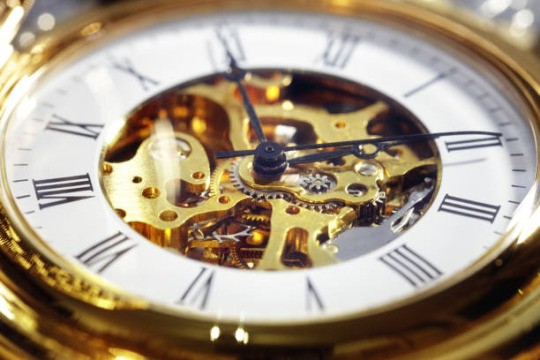
People generally pick up on how various tenses work just by everyday reading. And we all generally do fine, even with the nuances and caveats. But when we come to take writing more seriously, to think about how things work grammatically, we can start to get muddled up and unsure of ourselves.
That's because there's an extra little wrinkle for prose. In our everyday conversations, we all know the reference point now, the present. Anything we are saying is happening "now" is happening in the present. So that has the present tense. Before now is the past, after now is the future. Simple.
But in a story the "now," the [current time], might be written in a different tense. Usually present tense or past tense, for most fiction. Because it's a decision we are making on how our story is written, we start consciously deciding on how other parts of the text uses different tenses.

We wonder, this looks like the wrong tense, but is it? If it is, how do I fix it? And which tense should I choose? What's the difference between them anyway?
We'll start with the basics. Past, present, and future...
"I eat" [present] tells you that in the present something is in my mouth being chewed.
Past
Say I'm telling you in the present that I ate before now. I would say "I ate" [past] instead. Eating happened in the past, so I use the past tense form of the verb.
If I'm telling you that I slept before I ate, then from the eating reference point the sleeping happened in the past. From the time I'm speaking from, we go further into the past to eating [past], and even further into the past to sleeping [past + past]. Double-past! 👀

Although "sleep" doesn't have a double-past form. Verbs just don't have a version that indicates [past + past]. You can go back in time to "slept," (or "sleeped") but that's as far as you can go... without help!
In english we have [present] verbs and [past] verbs, and use extra words to push them into earlier or later slots of time.
We can push a past tense verb further into the past by using "had." I would say "I ate" [past] "after I had slept" [past + past]. Or, depending on the situation, other words that do the same kind of thing.
Sleep [present] Slept [past] Had [+past] slept [past]

Even Past-er-er
What if you did something before that? Before now, I ate, before that I slept, and before that I brushed my teeth. That would be [past + past + past]. How would that be written? "I had brushed my teeth... before I had slept... before I ate."
Notice how "brushed my teeth" was written in [past + past] the same as "slept"? That's because there is no [past + past + past]. You can't just use more "hads" to push it even further into the past. You can go up to two pasts, and no further! Thems the rules!
So you have to really spell it out: "I had brushed my teeth before I had slept before I ate." And yes, that does look real janky. That's because we don't naturally speak like this, stacking things further and further into the past. As human beings we think of things happening in time order, from furthest back, to present, to future, one after the other.

So we'd start from a specific time, and work our way forwards. "Last night [starting point] I brushed my teeth, then slept, then ate." Each "then" says "in relation to the event on the left, the event on the right happened later."
It sort of collapses into something simpler, regular ol' past tense. Which is actually called past simple tense. This is the [past] we used before; "I ate" was also in past simple.
Whereas the [past + past] is the most past-est past you can get--the perfect amount of past out of all the pasts in fact! This is called past perfect tense.
(I do know these technical terms, but I just think of it in terms of being past, or double-past. Far easier to understand in my opinion.)
Alternatively, you could write it as "Last night [starting point] I brushed my teeth before I slept before I ate." The events still all happened in the same order as before, but the timing relative to the next event in the list. Each "before" says "in relation to the event to the right, the event on the left happened earlier."
This version also looks very odd, because again us humans think linearly, one event at a time. And we don't read the next thing before the previous thing... so using "before" like this means we actually don't know when anything took place until we read the next part. That's why it can feel awkward to read "this happened before that."
Really we tend to talk about events in terms of one thing happening after another: and then, and then, and then. But this technically works. Just an interesting quirk to think about.
Future
Future works similarly. "Later this evening I will [future] brush my teeth, then sleep, then eat." We use the present tense--the closest one we have to the future--and add "will" to indicate the tense. Because, again, verbs don't have [future] tense forms--just as they don't have [past + past] forms.
(There is the "perfect" future tense, but it rarely comes up. So I'll leave that to your gut feel for how it's written, and you'll probably get it right anyway.)

Fuzzy Tense
There is another type of verb we haven't looked at though. A version of the verb that doesn't even care about time. They hang out in this timeless [fuzzy] area where instead of describing a specific action that happens at a specific time... they're a lot more loosey-goosey about the whole thing.
The technical term for this is continuous tense. These are usually gerunds: words with an "-ing" on the end, like "eating," "sleeping," and "brushing teeth." These can be mistaken for present tense, so I thought it would be a good idea to cover how these work too.
The little boy is in the park swinging, and see-sawing, and playing in the paddling pool.
These are used when we're not talking about a complete event. If we use the swing at the park, we are "swinging." Because we didn't just have one singular swing and stop. You could say the number of times we had a swing is [fuzzy]. We just weren't counting! So "swinging" leaves the number or amount of repetitions unspecified. We "continue" to swing over some time.

These also don't carry a tense, so again we can indicate the timing in other parts of the sentence. "He was[+past] swinging[fuzzy]" pushes the verb into the past. "He will be[+future] swinging[fuzzy]" pushes the verb into the future.
As a narrative example...
I left[past] the room, swinging[fuzzy] the door shut behind me.
There's a definite, non-continuous, complete, self-contained action shown at the start: "I left the room." By the end of the phrase, I am no longer in the room. That simple. Past simple in fact! 🎉
But tagged onto that period of time (between me starting to walk, and me being out in the hallway) is another action. The door swings shut.
Now, I did say "the door swings shut" which is not continuous. It's a complete action that happens once, and job done. But it's not specified at what point in time during the "leaving" part the "door swinging" part happens. And the writer (me) has chosen not to nail that down. I've just indicated they both happen around the same time. It's still [fuzzy].

To compare, let's see how else you could write the sentence with the same timing, but not using this [fuzzy] tense.
You could say "I swung [past] the door shut as I left the room." That has the same meaning, sure.
But to me, the main action going on is me leaving the room. The door being shut is secondary, not as important. So I'd rather have the important action first. "I left the room while I swung the door shut."
This works too, but the "while" (or "as") is saying "the action on the left happens during the action on the right." The action after it is more important timing-wise; the leaving is timed relative to the swinging. It's a little awkward, in the same way "before" is awkward, and for the same reason.
You could do something like "As I left the room, I swung the door shut." This also works. But weakens the act of leaving the room. It's no longer its own clear action... it's dependent on the door closing, for the "as" to work. Again, putting more weight into swinging the door shut. And again, timing things relative to what comes later in the sentence, like "before" and "while."
So I would prefer to put the important action first, and tag the secondary stuff on afterwards making it dependent on the main action. Like: "[primary] I left the room, [secondary] swinging the door shut behind me." Making the swing [fuzzy] lets it borrow the timing from the main action, making it dependent on it, and keeping the focus on the main action too.
And so it becomes a "continuous" form of the verb.

I think of [fuzzy] or "continuous" actions as things that can't be pinned down to an instant in time. Either because...
The timing isn't defined by the text. Because it is unknown like "The wheat will be growing well this winter." Or just doesn't matter as in "I left the room, swinging the door shut behind me." The period during which the action happened might be indicated (the door swung shut during the process of leaving the room), but not necessarily.
Or because it's not an instant in time. The verb captures many instances, like "swinging on the park swing." Or it's not something that can be counted in the first place, as in "I gazed at the water flowing through the gutter."
In-Tense Writing
Now that we know what tense even is... let's get back to the whole reason we're here. Writing prose.
While some genres more commonly use a particular tense, these things come in trends and waves and can change over time. Really what I'd suggest is to write in whatever tense feels right to you.

Me personally, I write in past tense, and that's mainly what I read. Because that's what I'm used to, when I start reading a story in present tense, it feels awkward and weird... at first. But over a chapter or two I get used to it and it's just fine.
Some people giving you feedback might say you "should" use this tense or that, but that might just be down to personal preference or what they are used to reading. It's not a good reason to change your whole text into a different tense.
You might even change tense for certain scenes--for example, writing in present tense but past tense for a flashback. Or you may reframe the time of the flashback as the new [current time] and continue to write in the same tense for that scene.
No matter which tense you use, events that happen before [current time] are written in the [current time + past] tense. And events that happen at [current time] are written in the [current time] tense.
And events that are talked about happening after [current time] are written in [future]; this doesn't change when you write in different tenses. And [fuzzy] just does its own thing either way.
(Oh and "now" will refer to whatever the [current time] is.)

With stories, the writer must choose which tense to write it in. Present tense is straightforward: it's how we speak day to day. You use the tenses just as they are described above. You could see it as providing more "immediacy" to your writing, because it's kind of all happening "right now."
So in present tense [current time] = present. Swapping that into the before-current-time from above, [present + past] = past tense. This is all a bit obvious... but for completeness I thought I'd point this out.
That said, past tense is a very common. It makes the story's [current time], the time it is talking about, have the past tense. Apparently this is used for a lot of fantasy stories, like stories "feel like" a story being told to you in past tense.
Again, I really don't think it matters what you choose. I don't think there are actually pros and cons to either present or past. Either way, some readers will like it, some readers won't be used to it. So don't base the decision on that. Just choose what feels best to write in to you.
Just as before, [current time] = past. Therefore, before the current time, [past + past] = double-past (past perfect). Note that [future] is still future, skipping over present. And [fuzzy] does whatever it pleases.
Future tense isn't really used apart from experimental stuff. So if that's your thing, I'm sure you know enough to be just fine. And double-past tense isn't a viable option for the main tense that [current time] uses. Unless, again, you're a mad scientist (see above).
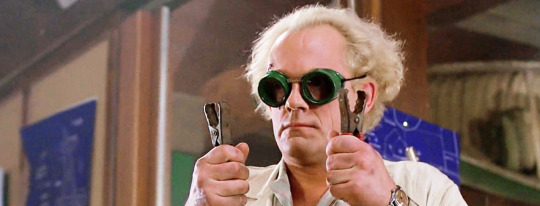
I hope this article gives you the groundwork you need to know what tense you're looking at, how to write in the tense you choose, and how to spot something that feels off and figure out why.
I hope you have a relaxing, tense day! 👍
2 notes
·
View notes
Text
Show and Tell
There's an age-old adage taught to new writers: "Show, Don't Tell!"
Some take it to mean they should remove all talking, because talking is people telling each other things. Some take it to mean you can't have anything happen off-screen, you have to show absolutely everything. Some say all text is telling, because it's not an image. Some say all prose is showing, because the reader has to imagine it one way or another.
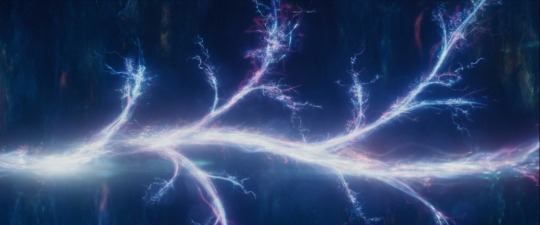
...Phew!
There are hundreds of ways people interpret this phrase, and unless they understand it correctly, writers can quickly find that it's just not feasible to write in such a way. There are many who have concluded that "Show, Don't Tell" is simply bad advice and should not be followed and offers writers nothing.
Why are there so many ideas on what this simple phrase means? Is it good, or should it be discarded from writing vernacular? What does it mean to "show"? And what does it mean to "tell"?
To get to the heart of what this advice is talking about, I give you a simple example:
She looked rich.
Is this piece of prose "telling" us something or "showing" us something?
Well, let's try visualising it. She could have fancy hoop earrings. Or maybe glittering diamonds around her neck. A long flowing white gown? Maybe she's more of a modern celebrity type, in a tailored suit, slicked-back hair and shades and pouting botoxed lips.
Hrm... the text didn't really narrow that down for us did it? She could look like anything. It is telling us that we would conclude the woman is rich based on what we see. But it doesn't show us what we actually see. So... we could be seeing anything.
Consider the difference if instead of text, someone gave us a photo of a rich woman.

This is Salma Hayek. She's a woman. She's rich. But in this photo alone, it's not obvious that she is rich. She doesn't look rich here. If someone told us "there once was a woman who looked rich," we probably wouldn't come up with this kind of image in our minds.
This is showing us something of course; it's an image. But it's not showing us something that is likely to have us conclude that "she is rich."
Now if we tweak the image a bit...

Okay, so sparkly jewels and an expensive coat is probably more in the ballpark. She may not actually be rich--those diamonds may be stolen, or fakes. This image doesn't tell us any hard facts regarding her finances.
But I put it to you that she looks rich, at least. And I'd say that most people would come to that conclusion when shown this image.
Now to put it in terms of prose...
Diamonds sparkled about her neck and hands, and a long faux-fur coat draped over her shoulders, swaying as she walked.
This isn't described to the tiniest detail; there are still aspects we would fill in with our imagination like height, dress, what the specific jewelry looks like. But when we visualise this woman we know for sure that she's wearing diamonds and a faux-fur coat. And we could easily conclude that "she looks rich."
That's the difference between telling and showing. One skips to the conclusion, the other lets us work it out for ourselves.
But... who cares?
Either way, the reader is going to get to the same place: she looks rich. The difference is the journey taken to get there.
If someone told us "Aliens have landed in London," we might not believe them. Even if we know them well, and trust them with our lives, we might think they're pulling our leg or it's the start of a joke.
We might ask, "How do you know that? Why should I believe you?"
If we were in London and saw a UFO slowly float down from space, plop down in Trafalgar Square, and a little green man popped his head out and said "Hi"... we'd be a lot more likely to believe that "Aliens have landed in London."
Why? Because we saw it with our own eyes. The idea that aliens did indeed land came from our own brains based on our own experience. We drew our own conclusions.
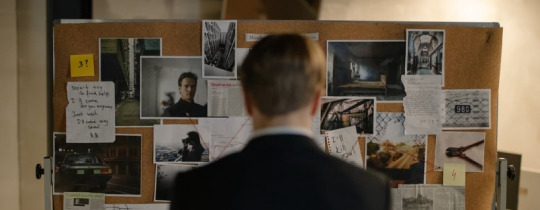
That's the advantage "showing" has over "telling."
The writer may want the reader to know a particular thing, may want to tell them a fact, may want to just copy-paste that detail from their outline into the prose and be done with it. They want to simply tell the reader the thing they want the reader to know.
But if they can show the reader something, and let them draw their own conclusions... that's a lot closer to how their brain works in real life. We experience things in the real world, sense things, see things... process what we've experienced, internalise what's true and what's not... and conclude things from that experience.
If we give the reader the chance to do the same thing while reading our stories, they will experience those stories. They will feel immersed in our world, as if they really saw and experienced those things themselves--because we're getting their brains to work the same way it would if it wa all real.
This is what immersion is all about. Making it feel like they are in the scene with the characters, witnessing everything go down!

On top of that, if we're using a viewpoint character, we're experiencing what they are experiencing. They are seeing "Diamonds sparkled about her neck and hands, and a long faux-fur coat draped over her shoulders." And we are seeing it. They are experiencing the world around them, and we're experiencing it with them.
We're relating to the character by having the same experience they are having! We're simulating how they think. We're seeing them like us: a real human being. (Or non-human being at least.)
So it immerses further, by allowing us to identify with the viewpoint character at a deeper level.
Does this mean everything has to happen on-screen?
Does everything have to witnessed by the viewpoint character and the reader for it to be part of the story? No.
"The Princess gave birth to a son!" the maid cried.
This is dialogue. But... isn't that telling? Shouldn't we write the birth itself into the story, to show that to the reader?
Not necessarily. If the viewpoint character isn't the doctor or the prince or something, it could be highly inappropriate for him to pop his head into the room while the Princess is giving birth, just so the reader can look over his shoulder!
It's perfectly reasonable that a viewpoint character would find things out by being told verbally, or by a written note, or whatever else makes sense--as opposed to witnessing everything to do with the story.
You couldn't have them witness the birth/creation of every character they meet just to accept that they exist, after all. And if they live in the US, it's not necessarily going to be feasible to fly them over to London to see those aliens and then back again so the rest of the story can play out.
This isn't about making everything happen in front of the reader. It's about focusing on the story, showing the experience of the viewpoint character (or if there's an omniscient narrator, what they "experience"). As opposed to telling the reader about the story in a summary.

Dialogue--even exposition like "The Princess gave birth to a son!"--is literally what happened. The maid came running in, and shouted those words, and the viewpoint character heard it. We are being shown what happened in the story.
Compare this to the writer telling the reader. That wouldn't be part of the story. It would be more like "Hey, GRRM here. Princess gave birth--just thought I'd let you know. Anyway, back to blood, grit, and drama."
The story is on hold while the writer tells us about the story. Definitely not as immersive as a character within the story telling another character within the story and the reader just overhearing it.
This is how to make exposition more immersive and enjoyable to read: have the reader overhear, observe, and pick up on things almost "by accident." The key there is to orchestrate those accidents.

There are many ways of getting information to the reader under the guise of it all happening naturally as the story unfolds. Even putting things straight into the narration, but dressing it up as the thoughts of the viewpoint character... as prompted by something they saw or experienced.
The below includes a narrated thought, for example.
I fell to my knees, tears in my eyes. It was a miracle!
This is what the viewpoint character thought. That happened. It is part of the story.
So you can keep things in the realm of the story, even when you're pretty directly feeding them what you want them to know. You can "tell" them without telling them--without them realising it.
Now, is there no excuse for ever outright telling the reader something? Is telling banned?
Not quite.
For the above reasons, it's generally preferable to show things and let the reader experience them most of the time. And to find excuses for them to experience things. But that's not always possible.
And for a particular section it may not be your intention for it to be immersive anyway, so do whatever feels right. The important thing is, understand that "showing" is a thing you can do. It's up to you to figure out how you want to use that understanding.
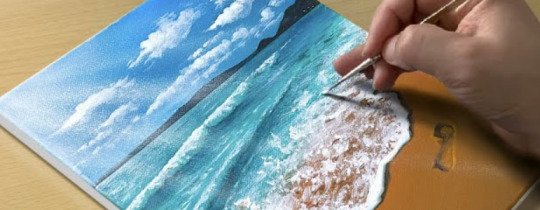
So what does "Show, Don't Tell" mean?
What is "telling"? The reader learning things by the narrator telling them what they want them to conclude.
What is "showing"? The reader learning things by experiencing the story and drawing their own conclusions.
That's the sweet spot. Keep the reader "in the pocket," keep them immersed and in the flow of seeing the story unfold, and let them figure stuff out themselves, like grown-ups.
You might say it this way:
Writers, show readers the story. Don't tell them about the story.
Instead of someone giving you a summary of "this really cool movie I saw over summer break. And then this happened, and then that happened, and [explosion noise] woohoo!" ...Just let them watch the movie!
Aren't they just the wrong words, then?
Some choose to rewrite the phrase using different words. Which is fine, if it helps them remember what it means. But I think the original words work just fine, too.
The problem is, people assume certain definitions. But there are other perfectly fine definitions we use in everyday speech too. If you reach for "show: to present an image," that takes a bit of mind-bending to get it to fit. But if you asked someone to "show me how to make a cup of tea," you'd expect them to demonstrate, to make the tea in front of you, in a way you can learn from.
And "tell me how to make a cup of tea" would probably get you a list of instructions with no demonstration. An explanation of how to carry out the task. That could be given as text on a piece of paper, or said out loud... that doesn't matter to being told how to do it.
A common reformulation of the phrase is "demonstrate, don't explain." Or "illustrate, don't summarise."
But, as "tell" can mean "communicate information," it's a synonym for those words anyway. And "show" can mean "allow (a quality or emotion) to be perceived; demonstrate or prove," so that's a synonym as well.

So what's the point of "Show, don't tell"?
"Show, Don't Tell" is indicating a direction to head towards if you want the story to be more engaging, and immersive. It reminds us:
Being told a room has no oxygen in it is less visceral than seeing a human being in that room struggling to breathe. "The eiffel tower is 330 metres tall" gets a less emotional reaction than standing beneath it and looking up.
It lets new writers know that it's actually possible to show things to the reader instead of just telling them "She looked rich."
Some writers don't know that they can show things, that showing something can teach the reader what they need to know just as well as telling them. But also be part of the story and enjoyable to read.
"Show, Don't Tell" is a valuable lesson to learn, and to teach others. Just remember to teach it by showing examples, not just telling them the phrase and leaving them to it.
12 notes
·
View notes
Text
Breaking Paragraphs & Splitting Sentences
a.k.a. "How not to ramble"
When speaking day to day, we don't think about where a sentence begins and ends. Or when a paragraph begins and ends. We don't even put punctuation in!
We can just ramble on and on about whatever's on our mind, like toasters, and walruses, and love, and chicken costumes. About that crazy thing that happened to us last night when you went out for a walk on the beach, and then watched the sunset, and then picked up a beer can, but then you were carrying it for what seemed like hours, searching for a bin to put it in, they should really put more bins on the beach, the place is a mess at the end of every day, what is sand anyway?

A stream of consciousness like that can work in prose... But if you want to make it easy to parse out the story itself, some structure is required to give the reader hints as to how to structure it in their own minds.
How does all that work? And how can you break up sentences and paragraphs in a way that affects your readers the way you want them to?
This isn't a case of making them "the right length" or having "enough" sentences/words so you can move on to the next one.
This is art, baby! And as such there are no easy rules to follow like that. You can do what you want, and go by feel.
Though if you just can't seem to get it right, and need more to go on... this article dives into "what's up with these paragraphs things anyway"? And "how sentence"? So you can build up an intuition for how they work, and how you can use them to affect your readers.
And we'll do so by you reading bits of prose, and watching out for your reactions to them...
You've already read the first example, in fact! What did you think of that stream-of-consciousness paragraph up there? How easy was it to read? Could you pick out a thread of story from it? It was a bit of a mess, right?
It was more difficult to read because its basic structures—paragraphs and sentences—were not used in a way that helps the reader out.

A paragraph keeps going until it ends with a new line, and a new paragraph. That new line is called a "paragraph break." Paragraph breaks are used to break the prose down into chunks the reader can file away into their brains, slotting it into the picture they've got of the story so far.
That doesn't mean they're memorizing all the words of the paragraph, though. They're memorizing a condensed form of what they think the paragraph means. Like a summary.
So what do you think the paragraph above means? When I read it it just comes off as gobbledygook, as rambling "stuff" that doesn't really have any point it's trying to make. And doesn't have any meaning it's trying to get us to file away. It's pretty much impossible to summarise.
This is why we have the term "wall of text." When a piece of text has few structures to chunk up information, it can be daunting to even start reading it.
First, we'd have to chunk it up ourselves--which is just annoying. But also it'll either be rambly nonsense with no real information so we can't understand it well enough to file away... or in theory it could have so much real information all in one go that we'll get overloaded and can't hold onto all of it when we summarise it.

Ever seen a scientific paper like that? They can get away with that because it's meant to be packed with information. And they're largely intended to be read by people who already understand all the terms, so they have a better chance of understanding it in the first place!
But with stories, with prose, the goal is for most people to be able to understand your writing. Not just specialists that already know what you're talking about.
So, we know we need to put in paragraph breaks to "break up that wall." But where? How do you tell what should be grouped up into a paragraph and when it should just keep going?
As with all art stuff, it's more intuition than anything. So as you read the following examples, think about how it "feels like" to read them. Why do they have that effect? And how can we use our understanding of what's going on to our advantage?

Jeff leaped into the air.
A paragraph could be just a single sentence, focused in on a single moment.
Remember, our brain condenses it down into what the point was for that paragraph, like a summary. What would the summary be for this? Probably just "Jeff leaped into the air."
This seems a little pointless to point out... but think about what this is doing for the reader's experience. How much effort do they have to put in to summarising the paragraph? 0%. And how much of the paragraph's text made it into the chunk they filed away? 100%. How many words were lost? None. And how many words had important meaning that you locked in to your brain? All of them.
One action holds all of our attention.
This is why a very short paragraph can have a big impact. In this example, it's probably not worth that impact—unless that leap has a big dramatic meaning.
Perhaps Jeff is leaping down into a gorge to fight a Balrog, sacrificing himself so his friends can escape. This short paragraph by itself holds on that moment in the reader's mind. Lets them ruminate on that moment and all that it means. The implications, the dramatic weight it carries from what came before in the story!
We can use paragraph length to have things stand out in different ways like this. Flip through your favourite novel sometime and look out for the lengths of paragraphs. Why did they choose to make it shorter or longer?
But anyway... this one doesn't have such impact, but it's cool to think about. 😅 It should probably have some more going on in the paragraph.

Jeff leaped into the air. He landed hard on a shipping container, with a clang.
Here, the paragraph as a whole has a little less impact. What happened to the impact of that first sentence? Did it go up or down? The main thrust is "Jeff gets on the shipping container." That's all that will matter for whatever comes next.
So the leap doesn't really matter now. And therefore those words didn't contribute much to the "summary" we automatically formulate in our heads. Instead of all the words being important, only maybe half of them are.
That isn't to say you need to cut out the less important words. It just highlights the extra impact a short paragraph can have with its contents.
If you wanted to, you could try combining sentences.

Jeff leaped into the air and landed hard on a shipping container, with a clang.
Now it feels like one smooth action, a long moment that blends together. That actually feels better to me. Instead of a series of separate sentences, only one of which having any impact on the story that comes after it... it's one sentence that impacts the story as a whole.
Think of it like a comic panel. You can have just 1 thing happening in the panel with extra impact. Or multiple moments of action joined together with motion lines.
Or I prefer thinking of it as an animated gif, joining multiple independent photos--multiple moments in time.
You can't just join everything together into a single sentence though.

Jeff leaped into the air, and landed hard on a shipping container, with a clang, and thought he heard a noise, and ran over to investigate, and said "Who goes there?"
Ick. Right? I mean, you can probably understand what's going on. But it's a bit of a blurry mess.
Why don't run-on sentences like this work, though? Why does it feel rambly even though the paragraph isn't overly long?
Well, what is the point of this sentence? Like we did with paragraphs... think about what the summary is.
Because it's all crammed into one sentence, it's very difficult to summarise. It could be "Jeff gets onto the shipping container." Or "Jeff hears a noise."
If you want to stretch it, you could say "Jeff does some stuff." But if that's all you remember about the sentence, how impactful can that be on the your experience? Little to none. And maybe only a quarter of the words had any impact at all, if we're being generous!
That "with a clang" sensory detail was a nice little tidbit before. Now it gets lost in the noise of actions and dialogue. It kinda feels out of place. There's no longer any room for experiential stuff that grounds the reader in the scene.

So you could cut it all down and remove whole parts of what happened from that sentence. Or you could split the sentence.
Splitting Sentences
How do we do that? First, think about what separate pieces of information we're getting from that sentence. I tend to use slashes for this.
Jeff leaped into the air / and landed hard on a shipping container, with a clang / and thought he heard a noise / and ran over to investigate / and said "Who goes there?"
Now, why is each of them there? What are they contributing to the paragraph? I'll bullet these out so it's easier to label each of them.
Jeff leaped into the air --movement
and landed hard on a shipping container, with a clang --(continues moving) more movement (with sensory detail)
and thought he heard a noise --(stops moving) hears something
and ran over to investigate --movement (because he heard something)
and said "Who goes there?" --dialogue (because he heard something)
Now, you could split each of those parts into their own sentence. But that isn't always necessary. As we saw earlier, the "long moment" of the leap and landing works fine joined up. In terms of the above notes, he moves, then continues moving into the landing. It has one through-line, getting from A to B.
But then Jeff stops moving. That through-line ends, and a new one begins. That makes the perfect opportunity to split the sentence here. The sentence ending hints to the reader's brain that a new through-line is beginning, making it easier to comprehend.
Then he resumes movement, but in a new trajectory--with a new reason, a new goal. It's also implied he stops at wherever he ran to. As this action is caused directly from Jeff hearing something, you could tag it onto that previous part.
And then Jeff speaks. This is separate text that is marked as being different from normal narration. Which is why it should also be its own sentence.
That gives us:
Jeff leaped into the air, and landed hard on a shipping container with a clang. He thought he heard a noise, and ran over to investigate. "Who goes there?" Jeff said.
Just as each paragraph has 1 summary, each sentence has 1 meaning... showing 1 specific thing. One action, one moment, one linked thread of actions. One through-line.
It all has a knock on effect, up the chain of structures...
The clearer the meaning of each sentence is, the easier it is to grab the meaning. The clearer all the sentences are in a paragraph, the clearer the paragraph. And the easier it is to condense it into a summary and file it away.

Splitting a sentence into parts like this also gives us another advantage. Each sentence now has room to breathe, and to grow. We can add more detail, more description, to each sentence. We can be more specific about our meanings within those sentences.
For example, we can describe the noise he heard.
Jeff leaped into the air, and landed hard on a shipping container with a clang. A skittering sounded to his right, and he ran to the edge of the container. "Who goes there?" he called into the night, breath fog lit by the flickering floodlights.
Of course, we could strengthen the impact of certain "meanings" by giving them their own sentences, even multiple sentences. Give more time to the skittering, maybe a worried thought.
This works similarly to paragraphs:
The more focus a sentence has, the more meaningful it is.
So let's put some of that in.
Jeff leaped into the air, and landed hard on a shipping container with a clang. Skittering! To the right! If it was a Fat-Roach, this night was gonna suck. Jeff ran to the edge of the container, and peered into the dark. "Who goes there?" he called, breath fog lit by the flickering floodlights.
Okay cool. I took the liberty of throwing in narrated thoughts from Jeff, and expanding quite a bit on the "Jeff hears skittering" moment. And moving the "night" part into a different sentence where it felt more at home. Oh yeah, and introducing the idea of monstrous giant cockroaches that roam the night, just for kicks.
The sentences are clear, and have a good amount of detail to them. Though we've still got an unwieldy paragraph that's hard for the reader to condense down into a simple summary. There's just too much going on--same problem we had before.

Breaking Paragraphs
Paragraph mode! Engage!
I'll quickly split the paragraph up into threads, using double-slashes. Things I want to stand alone as something new the reader should file away. See if you can figure out what summaries I'm aiming for.
Jeff leaped into the air, and landed hard on a shipping container with a clang. // Skittering! To the right! If it was a Fat-Roach, this night was gonna suck. // Jeff ran to the edge of the container, and peered into the dark. "Who goes there?" he called, breath fog lit by the flickering floodlights.
Why did I choose those spots to split? Here's my thoughts on each part:
Moving onto the container.
(Stops moving.) Notices the skittering and Jeff's internal reaction to it.
(Stops thinking about it.) Jeff acts on what he was thinking.
Hey, those almost look like summaries, don't they? If you're not sure how to split the paragraph up, think about what summaries--what points--you want the reader to come away with after reading these new paragraphs. And break them up or group them up accordingly. Maybe even move things around so you can get a better grouping you want to stick in their mind.
Let's try splitting things up based on the summaries we want the reader to take away from it.
Jeff leaped into the air, and landed hard on a shipping container with a clang. Skittering! To the right! If it was a Fat-Roach, this night was gonna suck. Jeff ran to the edge of the container, and peered into the dark. "Who goes there?" he called, breath fog lit by the flickering floodlights.
Now, you might choose to separate them a little differently. Perhaps break before the dialogue too. Or join the physical reaction onto the mental reaction. This is art; it's all loosey goosey. And it's your art. It's up to what you what feel is best.

That said, there is one aspect every paragraph has, or should have, for it to read well.
Character Focus
Take a look at this:
Jeff ran to the edge of the container, and peered into the dark. "Who goes there?" he called, breath fog lit by the flickering floodlights. Arnold stumbled out from behind a pile of tires. "It's just me sir," he said, gasping for breath. Jeff rolled his eyes. "Well get over here would you? And stop wheezing like a demon in the night. You'll attract the Roaches." "Right you are sir."
Now we have 2 characters doing and saying things in the same paragraph. And it starts getting a bit rambly again. It's hard to follow who is saying what because it's all said as part of one stream, one paragraph, one chunk. We can't file away the previous part of the conversation before the next one barrels into our brains.
You could say this paragraph is about... "A conversation between Jeff and Arnold." But...
It's better to have a paragraph be about one person rather than multiple.
Any sentence has one subject, as in one thing that is performing an action. Even if it's implicit as to what is acting, and what they are doing. A narrated thought is one character performing the action known as "thinking." A description is one character (or perhaps narrator) performing the action known as "observing." And so on.
It works similarly for a paragraph. A paragraph is "about" one character (or narrator). Which character it's about is indicated by who acts first.
(If more than one character is involved in an action, go ahead and show that. But the paragraph as a whole should still be about one character or the other.)
Jeff heaved Arnold up onto the shipping container. "What are you even doing, man?"
In the above example, Jeff is the subject of the paragraph because he's the one performing the action. Which means we can just throw in some dialogue and it's implied that it was spoken by Jeff also.
Arnold clambered up onto the shipping container, with a helping hand from Jeff. "What are you even doing, man?"
(Read more about how paragraphs are used with dialogue.)
If Arnold was the one acting at the start, we intuit that the paragraph is about him. And we'd assume the dialogue is his, too.
Let's try putting this idea into practise with our conversation from earlier, and see how it feels. When we change to a different character acting (speaking), we break into a new paragraph.
As you read this, pay attention to who is acting, and how that sets up who you assume is being referred to in the rest of that paragraph.

Jeff ran to the edge of the container, and peered into the dark. "Who goes there?" he called, breath fog lit by the flickery floodlights. Arnold stumbled out from behind a pile of tires. "It's just me sir," he said, gasping for breath. Jeff rolled his eyes. "Well get over here would you? And stop wheezing like a demon in the night. You'll attract the Roaches." "Right you are sir."
How does that feel? Better? Clearer? Now each paragraph features one character, and what they say has its own spotlight.
You probably didn't think twice as to who each pronoun was referring to, even though both characters in the scene use the same pronoun.
How did you know that? Because the paragraph was set up earlier to be about one specific character. So using their pronoun automatically refers to that same character.
And who said "Well get over here would you"? Did you guess it was Jeff?
How did you know that? There is no dialogue tag to tell you, after all. You know because Jeff is that paragraph's character. And why is that? Because Jeff is the one acting.
See...
You know these rules implicitly as a reader.
That's how you guessed correctly. But hopefully seeing these ideas spelled out and demonstrated will let you lean on those rules. Make them work for you!

And note that last paragraph, which has no character mentioned at all... Who did you think is saying that dialogue? Arnold, right?
How did you know that? This is a conversation between 2 people. Each paragraph is a different person speaking, bouncing back and forth between Jeff and Arnold. Jeff just spoke, so it's Arnold's turn. If the next paragraph has dialogue, it stands to reason it will be Arnold's dialogue! Simple as that!
So how did the reader know who was speaking? Because a pattern was established by the writer. The way it was written set up an expectation in the reader, which let the writer use that expectation to write the scene a little easier.
(Just don't rely on such a pattern for too long. If they forget whose turn it is, that'll get real confusing. 😅)
When you next read a novel, have a look out for things like this. What patterns and expectations is the writer creating, even at the prose level? How are they relying on those expectations to tell the story?
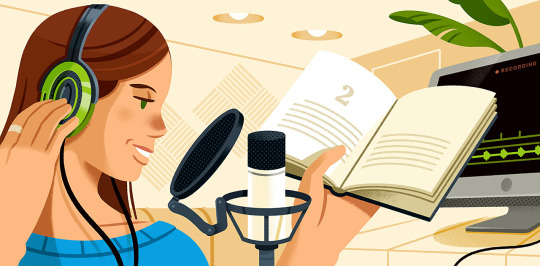
Some paragraphs have no action though. Think back to this paragraph:
Skittering! To the right! If it was a Fat-Roach, this night was gonna suck.
This doesn't mention any character at all. It looks like plain ol' narration. But we have a viewpoint character: Jeff. So any narration is more like "what Jeff sees," "what Jeff thinks," etc.
Jeff is acting here. What is he doing? He is thinking. This paragraph is narrating thoughts what Jeff thinks in this moment. So he is the character of this paragraph, kind of by default.
But then, how do we know Jeff is the viewpoint character, and not Arnold? The same way we know which character is the focus for a paragraph, but one level higher. They were the first one to act in our story. We started with "Jeff leaped into the air." So he became our viewpoint character—for this scene at least.
That's because I'm writing in "3rd person limited," where I'm limited to only what one character experiences and their internal thoughts—known as the "viewpoint character." If you're not writing with a viewpoint character, the reader will assume it's the narrator commenting on what's going on instead.

This is why when some stories start with a description of the kingdom or some backstory of the world, readers can feel a bit lost until a character is introduced. "Who cares about the lore if there aren't any characters in this story?"
And why it's more engaging to be introduced to a character doing something instead of just being mentioned as existing. "Okay, so there exists a princess in this world. But they're not doing anything, so this is just data. Skip to the story!"
Your mileage may vary on this. Tastes differ after all. But it's something to think about for your own stories.
In summary...
Paragraphs have 1 character doing 1 or more closely related things. (Even if those actions are no physical: observing, thinking, talking, etc.) This then condenses into a summary that will have some amount of impact on what happens in the rest of the story.
Sentences have 1 character doing 1 thing, possibly with added super duper closely related things of the same kind.
Though when I put it like that, it seems way over-simplified, and comes off as sentences being pretty much the same thing as paragraphs. And maybe chapters? And stories?
The advice "focus on the story being told" applies to all parts of the text, great or small.
And it's a fair guiding principle for writing good prose and good stories. But also not necessarily that helpful when you're "on the ground," and "in the trenches," writing the prose day-to-day.
That's because it's a lot more about intuition. About heuristics. About where it feels like you should end a paragraph, etc. Hopefully the intuition you've absorbed through these exercises will be a lot more useful than trying to enforce these "rules" for every piece of text in your story.
Perhaps you'll develop these ideas and have your own way of thinking about them. But hopefully this will give you a solid place to start from and you can get to ripping and stitching sentences and paragraphs whenever you want to! 🫶
#paragraph#sentence#splitting#breaks#writing#article#character#focus#dialogue#action#narration#thoughts#reading#active reading#reblog
6 notes
·
View notes
Text
How to Start Writing Fiction
Many readers feel the urge to write at some point. But getting started can be daunting. Do I need to build a world for years like Tolkien did? Do I need write it all at once? What structure do I need to use? What do I need to do to write a successful novel?
When you're new to writing, the key first step is... throw all that stuff out the window!
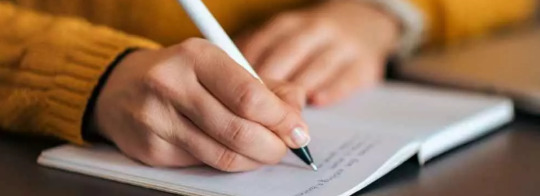
Writing isn't publishing. Writing isn't success. Writing isn't making money. First you've got to be able to write without any of that. If you're lucky, maybe those things will come for you. But you cannot control those things. And so, there is no "way" to make them happen.
Your sole focus should be on what you can actually control--on writing as an activity...
In the early days, you may feel discouraged at not writing amazing stuff. But don't be so harsh on yourself. Think about your favourite book. Do you think it came out as amazing and perfect as it is when you read it? I can tell you for a fact it wasn't.
It came out with glaring flaws and huge issues and grammar problems and all the rest of it--just as yours will. They then spend months, even years polishing it, redrafting, revising, editing, using feedback... to turn it into something that looks like it just "came out that way" effortlessly.
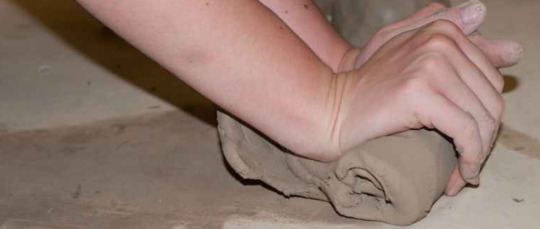
Think of what you first write as a first draft, not the final version you'd see on the shelves for the world to see. When you start writing a new story, your job is to throw down messy blobs of clay--simply getting raw material on the table so you can work with it. Later you'll shape it into something pleasing to the eye... something that looks like it just fell out of the sky fully formed, painted, and glazed into its beautiful final form.
You don't know how to shape it yet. You will, over time. But for now...
All your focus should be on throwing down messy clay.
And by that, I mean, get used to writing new stuff. You don't need it to be good, you don't need it to be the next hit, you don't need it to be long. You don't even need others to see it! You just need to be able to write words.
Writing short pieces or short stories is a great thing to aim for at the start. Nothing fancy. That way when you want to improve later down the line, you'll at least be able to write something new to try out what you've learned. You could even make a new draft of something old you wrote with your new understanding.
But then... even knowing how to begin that stage can be daunting. How do people write? It varies.
Every writer has their own process, their own methods, their own style. There are generally considered two extreme ends to the method of writing:

Discovery writers make stuff up as they write the story. If you don't yet know what your preference is, I'd recommend starting here.
Just sit down, put pen to paper, and write what pops into your head. Find out what comes next as you write it.
Note, you don't have to put literal pen to literal paper. But "pen-or-pencil-to-paper, or finger-to-key, or voice-to-dictation-software" isn't nearly so pithy. However you like to record words, record them! XD Don't worry about what medium to use, what equipment, what software... use whatever is easiest to get out of the way and get on with writing!
A good way of getting started with this is an exercise: Freewriting Exercise to Stretch the Writing Muscles This gives you a short challenge that forces you to stop worrying about what comes next and if it's good and how to publish it and stuff like that... put all those aside, and get into the flow! Just start writing!
Give it a good try at least. Even if you don't turn out to be a discovery writer, being able to get into the flow of writing is still going to be a valuable skill as you progress.
And you may come up with new ideas for full stories, and start on those!
If you're finding you lock up in the face of the infinite possibilities of making-it-up-as-you-go... you may want to try a little outlining.

Outline writers make stuff up before they write the story.
So... they still sit down, they still put pen to paper, and they still write what pops into their head. But they don't do it in prose form. They do it in outline form. Then they turn their outline into prose form later.
This might be bullet points of important plot beats. It may include summaries of various characters and world elements.
I'd recommend just dipping your toe in before going full-bore into being an outliner. Somewhere else, just write a short line for something that will happen in the scene after the one you're writing. Or a short line about what happens at the end. You don't need to stick to that plan. It's simply a little pointer to give you just enough direction to not feel lost while writing.
Outlining can be a lot of fun by itself though! You can spend hours, days... years noodling with worldbuilding and moving plot points around, and never actually writing any of the story at all!
The problem is, it can be too fun. You can feel productive while actually spinning your wheels in worldbuilding-land. Getting stuck like this is referred to as (thunder sound effect) "WORLDBUILDER'S DISEASE!!!" (evil laugh)
Remember that writing isn't worldbuilding. Writing isn't outlining. Those can be part of your process. But...
A writer is a storyteller
You can do all the worldbuilding and outlining you want to and still be unable to write that story, because you have no practise writing.
So please, please, practise writing. Whether you're an ouliner or a discovery-writer, you still need to actually write to get started as a writer.
It can even happen that you have great fun outlining a story, but when you try to sit down and put pen to paper all that drive and fun has left you.
You may think, "How could I do such a grand vision justice?" Or, "Writing the story just isn't as fun as inventing the world and what happens!" "Am I destined to only make up worlds and outline things but never write a real story?"

These are telltale signs your brain enjoys discovering new things the most. That's probably what made outlining and worldbuilding so fun! But it also means that when you come to writing the story itself, you're no longer discovering anything, no longer imagining new things on a blank map of possibility...
Now you're following a very narrow route you've set for yourself and feel like you can't put a foot out of place because it's so carefully constructed that it could ruin everything if you do!
If you recognise that feeling, back off from outlining. You're probably a discovery writer. Sure, you can just worldbuild and outline for fun. Nothing wrong with that if you enjoy it. If your goal is to write stories, however, you've got to dial in that balance of planning and improvising that your brain likes.
This is why every writer has their own way of writing. Their own routines, their own process... it's whatever method their brain likes that also lets them get a story down.
So this is how to get started writing. To write stories. To figure out how you like to write.

When you've got past that point, and you're comfortably writing new stories... still try to hold off from wanting to become the next hit author and write the next epic fantasy or 5-book series. You can get to those if you want to, later down the line.
To even get published in the first place, you'll need to not just be a writer, but a good writer. So next, focus on becoming a good writer.
A good writer isn't publishing. A good writer isn't success. A good writer isn't making money. Those things do not define who is a good writer and who is not.
A good writer crafts the experience of the reader
You can only do that if you a) know what experience you want the reader to have, and b) know how to use language to shape the reader's experience into what you want it to be.
How can you do that? It's actually fairly simple. I have another article about the different things you should be doing to reach this next step: How to Become a Better Writer
So start your writing journey today, and I'll hopefully see you over there soon :D
14 notes
·
View notes
Text
How to Become a Better Writer
It can be easy to stagnate in your writing. To feel like you're spinning your wheels and not progressing.

"But I'm listening to all the writing podcasts all the time!" Unfortunately, it's not as simple as that. Writing podcasts are great (I highly recommend Writing Excuses)... but are best for passively absorbing ideas around the art of writing.
You cannot passively become a better writer.
So what should you do?...
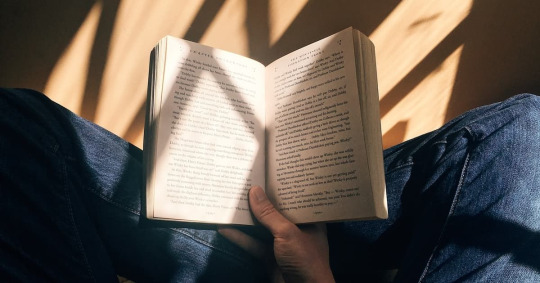
There are 3 main things to really get going in your writing: reading, writing, and getting feedback. (And there's a bonus hidden power up at the end!)
Reading
Read the language and medium you want to write in--regularly. ("Medium" being prose vs poetry vs academic papers, etc.) Why is that?
You need to learn and get a feel for how the grammar of the language works. You can do that with textbooks or a tutor. But if you've got a gut feel for what prose "looks" like on the page, because you've done a load of reading, you'll have a gut feel when your prose doesn't "look" right.
For example, if you've read a lot of dialogue, your brain naturally picks up on the rule that if the dialogue would end in a full-stop (period) but is followed by a dialogue tag... a comma is used instead of that period. And you won't have needed to memorise that edge case rule.
Reading lets you immerse yourself in the form of it, and absorb how it functions along the way. Including all the subtleties of how prose works that is different to everyday speech or communication. And it gives you a great baseline to learn these intricacies more directly, because it can click into place with what you've already picked up through reading.
Consuming stories through any art form--film, comic books, audio podcasts, etc.--helps you figure out your own tastes, your likes/dislikes when it comes to what you enjoy in a story. Which will form your style of writing, as you gain experience.
So reading isn't really required. For some, reading is a lot more difficult than watching a TV show, or writing their own stories. So you can learn these things in other ways as I mentioned.
The reason reading is the go-to recommendation is it is simply the most direct route. You can develop taste, understand story, and pick up on grammar and how the language works... all at the same time!
Whatever route you take, this is particularly helpful in the early days of writing. Seeing books by established authors with the eyes of a writer is a different experience to that of a regular reader. Instead of thinking, "Okay, I understood that part." You think, "Wow, you can do that in a novel?!"
You pick up tricks you can use in your own writing, as you read. And pick up on things you don't like in the way they write. This is "active reading"...
Don't just read: think about how what you are reading actually works on your brain.
You might think about how you would have written that sentence, or how you would've had it played out slightly differently to better hit that dramatic sweet spot.
That's what developing your own style is like, also known as a writer's "voice." Developing taste is when you start to gravitate towards some movies over others, and enjoy reading about certain characters and plots over others. You naturally do this when you've watched a lot of shows and movies. And you'll naturally do the same as you read books, as a writer.
Simply noticing what you like and dislike about what you read leaves you with a better sense of what you want your stories to be like. Both in terms of taste (genre, plot type, kinds of character) and style/voice (how you use the language to tell a story).

Writing
Writing regularly gets you the practise you need. Get used to sitting down and writing words--paper, digital, doesn't matter. And it doesn't matter if it's good. You don't need to show anyone else everything you write. What matters is that you practise the art of writing.
In the past I've used this exercise to get into the habit of writing, without worrying about it being good, editing/polishing it up, showing other people, etc. which actually lets the words come a lot easier. You can get into the flow of writing a lot better if you're not second guessing yourself, and this exercise gives you no time for such an indulgence! [Freewriting Exercise]
This is great for setting up a "mode" within yourself in which you are only creative, and you never second-guess or edit or revise. This is a great thing to work towards as you write, as it'll make the act of creating in the first place much more manageable. Think about it like this: when writing, your job is to slap down messy clay you can build with later.
Just writing something--anything--is productive in itself. And you'll probably start writing better stuff as you go just from the practise, and even find a story you want to develop from it!
But it's also good to finish things--both for the dopamine hit, and to be able to practise editing your work, understanding the structure of your story, and...

Getting feedback
Once you've got something you like but want to make better, get scientific! Ask people for feedback! (Preferably ask people that aren't your friends and family.)
Your goal in getting feedback is to understand how your writing is conveying your story to readers. What effect your use of language has on someone other than yourself.
Some will read it and like it, some will dislike like it, some may even hate it! Thing is, those are all subjective takes on what they read. When someone says a film "is good" or "is bad," they're really expressing that "it has things I like experiencing" or "it has things I don't like experiencing."
A hardcore fantasy fan might say a sci-fi film "is bad" because it doesn't have fantasy in it. Or visa-versa. All it speaks to is their personal tastes, not necessarily about the quality of the film as a whole.
Which means there's no need to worry. It's all just data.

Look at feedback like a scientist would the results of an experiment.
You're looking at your work in a scientific way. You're studying its effect on those readers. And through that analysis, learning how language affects their experience. Use that new understanding to bend language to your will so that it has the effect you wanted for your story.
This means it's not about doing what the readers want you to. Even if they're writers, and you respect their work... they are one reader among many. When it's published, it could be one reader among millions!
Others may have the opposite suggestion on the same piece. You could get 20 differing points of view. Don't give any one comment more weight than any other comment you might receive.
Learn about language and story, through reactions to your writing.
Use their reactions and suggestions to learn about language and story. Don't learn "how to make your story better," even if that's what they're trying to force on you.
Always, always, do what you want to do with your story. If you learn from the feedback and critique, and you end up wanting to tell your story differently, then do what you want and change your story. If you don't end up wanting to tell your story differently, do what you want and don't change your story.
In other words, any feedback can be taken or discarded at your own discretion. You're not trying to find out if your story "is good" or "is bad."
You're on a data-gathering expedition!
This process is vital to growing past writing readable prose and gaining mastery over the language--bending the words to your will and crafting experiences for readers to have.
By looking at things more scientifically, you'll begin to grow faster and faster. There's still a lot of subjectivity to it, of course. But that's the art: shaping another person's subjective experience by words on a page!
And as you do this more and more, you'll be able to write to a better standard even before you've gotten feedback.
"But it feels scary to share my work!"
It does, at first. "What if they don't like it? What if I get criticism?" The context of this process is that you are conducting experiments to gather data, sure. But it can be hard for your brain to get on board with that, and to skip the gut reaction of "oh no they don't like me!"
So here's one extra specific experiment you can conduct if you're worried about people seeing your work--even sharing complete stories we're proud of.
Write something you know isn't the best. Or is actually bad. First-drafts tend to be bad without editing--that's all just part of the process. So just write a little something. This is safe enough; if you lack confidence in the first place, then thinking your writing isn't good is par for the course, even if it's good. So doing this on purpose shouldn't be a big deal.
Now, knowing it's bad, post it somewhere actually requesting feedback on it. Asking people to tell you what's bad about it. You already know there's stuff wrong with it, things you might want to fix already. All that's happening is others are talking about the same things, and perhaps finding other aspects you can improve you didn't spot. That's the whole point of getting feedback: finding things that you'd want to fix that you didn't notice on your own!
But this way, you're initiating all of it, from writing "badly" to people telling you what you wrote "badly." That's what you wanted to happen.
And, even when you're more confident in your writing ability... that's what you'll be using feedback for too. This is like a practise run to get used to the feeling of putting something out there and people talking about what's good and bad about it.

Now, the uber-writers know this one last secret to growing as a writer: Giving Feedback (shh, don't tell anyone).
Giving Feedback
This is the juiciest of them all! You're active-reading... plus plus! Because you also have to put into words what is happening, which is even harder than just sensing you're not into how that writer did that one thing. You also get scientific with it--but from the other side!
That sentence didn't feel right to you. Why? How might it be changed to make it feel less weird? And how do you convey that to the writer so it's useful feedback?
That scene wasn't as impactful as you thought it was going to be. What about the structure of the story let that down? How might you shuffle things around to bring out the drama in that moment?
This is great practise for keeping your editor-brain separate to your writing-brain. You're practising not creatively writing at all, while being in the very analytical mode of finding any problems. You're figuring out how to shape the messy clay into something more purposeful, easier to read, more effective. While being detached entirely from the text, because it's not even something you wrote! This mindset is very useful when you want to get into editor mode and work on your own stories.
This kind of deeper thinking is what you get by giving feedback to people asking for it. And those that are looking for feedback are from all sorts of backgrounds, and all sorts of skill levels when it comes to writing.
You can see a lot of new ideas, new ways of writing, new traps to fall into, and analyse them all to figure out what makes them tick. And they tend to not be entire novels, so you can get a lot of that in a shorter time, too!
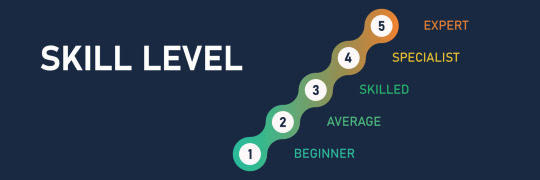
Just keep in mind those different skill levels when writing your feedback, however. Back when you were just starting out, if someone who seems to know what they were talking about said to you "it's good," like a family member might do... how would that have made you feel? On top of the world! And if they told you "it's bad," you would've quit writing on the spot!
So many writers have quit writing from bad feedback at an early stage for years!
This isn't to say you should coddle them and pat them on the head and send them on their way. Even if you sense that they're not at the "scientific" stage yet, they are seeking to grow as a writer. And hey, look at that--you're a writer, and you can help them grow!
So, start with a positive thing about their piece. Even if that's "you've got a clear vision of your world!" when you as the reader aren't exactly sure you have a handle on what that world is even if it's vividly described.
Be truthful, but find something that they've got a glimmer of that will help them in their writing journey. In the early days, finishing anything is tough. Having an idea and writing it down is tough. Getting tense correct is tough. Because it's all new to you.
Having a clear vision of their world isn't something everyone has. Sometimes it's so far in the background that you feel like you and the characters are standing in a blank white room. So even if the only good thing is that they have the confidence to have a world and present it to the reader... hype them up on that!
And whatever little slice of being a writer they've got is a good place to grow from. Nurture it, even in a brief comment pointing it out. Make them feel good about it.

Then, based on what their skill level might be, give them something to reach for in what they write next.
I like to make that clear to such writers... in the early days, you shouldn't be editing and revising and redrafting the same 3 opening paragraphs over and over, you should be writing new stuff all the time! So...
Give them something to work on for next time.
...Or next chapter, or whatever. Like, "For your next story, think about how you might show the world from your character's perspective more. What do they notice? What do they think about the statue in the distance? And how would they describe it? This helps the reader get to know the character better, just by how you narrate things. 👍"
Something simple, and understandable, with a hint of teaching them why that might be good for a story. Don't inundate them with your many pearls of wisdom and a full line-edit. Just gently help them take one more step in the right direction.
All of this is scaled according to the apparent skill level of the writer you're giving critique to, of course. A better-written story might warrant a real review of the story as a whole, and a longer list of aspects they could look into improving. Things like that.
Just be careful not to make people run away from writing. It's all too easy to cause.
54 notes
·
View notes
Text
How to Write Dialogue
A lot of a story is told through narration: action, description, exposition, and so on. But a big part of characters interacting tends to be speech. In prose, we call this "dialogue."
The key to what happens in the scene for this is...
People communicate in their own way.
To a new customer entering their store, a gruff character might say "What do you want?" Whereas a more personable character might say "Welcome in! Can I help you?"
Maybe the character would use body language, with a wave as they speak. Or only use body language to communicate in this moment, with a polite nod and smile to the customer with no dialogue.
If they share some knowledge with character they are communicating with, they may speak differently, with an unspoken shared context for their conversation. Compared to speaking to a character who doesn't have that knowledge.

If both characters have the shared context of knowing Frank is coming for tea at 6, it would be odd if one said "Frank is coming for tea at 6." Because the person they are speaking to already knows that. (Unless they have some reason to believe they've forgotten.)
But it would be natural for one to say, "When was he coming, again?" or "I hope he doesn't start smoking like he did last time," without even declaring who they're talking about, or what the situation is. Just the new stuff. Just like people do in real life.
Think about why the character chooses to speak at this time, not before, not waiting until later? What do they want to communicate? How do they want to communicate it, how do they phrase it, what other things go along with it like tone, volume, body language as I mentioned earlier?
And of course, all of those things are affected by the character's personality, their mood and emotions in that moment, their relationship to the people they are communicating with, and the subject they are talking about.
A lot of times all of that just comes naturally from our understanding of the character, and we don't have to think through each of these one at a time. But if you're stuck, making it more of a "process" can help you get rolling.
And now, onto the mechanics of dialogue in the prose itself...

To mark text as being spoken instead of narration, it should start and end with double-quotes, "like this." There are novels that use single-quotes, but this is a rare exception and tends to be more common in older books. But if that's your thing, you do you.
Apparently, the UK flips this and starts with 'single-quotes'. I've lived in the UK all my life, and was taught to use double-quotes. So... I guess your mileage may vary, I don't know what that's all about... 😅
If a line of dialogue ends with a complete sentence, it will normally put the punctuation before the last quote. There are exceptions, and stylistic choices, but that's the general rule for dialogue.
"The sky isn't blue."
You can have quotations within the dialogue, marked with single-quotes. And, in theory, the further down the rabbit hole you go, it switches back and forth between single and double quotes.
So, a quote within dialogue has single-quotes. A quote within a quote within dialogue has single quotes again. And so on...
"And he said to me, 'Go over there and tell them, "Frank said, 'The sky is blue, darn it!'"'"
Yes this does look weird, and yes it can be confusing keeping track of the layers of quotation. Which is why it's very rare, in fiction at least. Instead of making a direct quote, a speaker normally paraphrased, or rewritten in other ways to simplify the structure of the dialogue.
"Frank said to tell you the sky is blue."
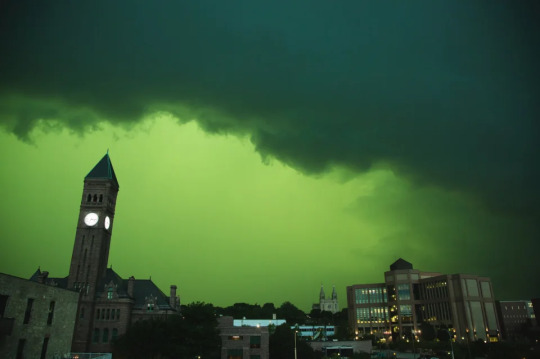
If the dialogue ends its own sentence, but the sentence as a whole continues with a dialogue tag, the full-stop/period at the end of the dialogue becomes a comma.
"The sky isn't blue," Geraldine said.
This is because a dialogue tag is actually part of the same sentence.
A dialogue tag is like a luggage tag tied to the end of the dialogue to tell us more about how it was said.
In the example above, there is a dialogue tag to tell us the character who said it: Geraldine.
You could write the dialogue tag in a couple of other ways:
"The sky isn't blue," said Geraldine. Geraldine said, "The sky isn't blue."
But this is uncommon in modern novels, and makes it have a different old-timey vibe that may be confusing or distracting for readers. So bear that in mind if you want to try it out.

Now, if it's part of a longer piece of dialogue, you could leave it to the end of the spoken words to have the dialogue tag as normal. But the reader will be wondering through the whole thing... "Yeah, but who's even saying all this?"
To avoid this, try to have the indication of the speaker sooner rather than later. You can use any of the methods from this article to do so. But one example would be:
"Fourscore and seven years ago," Lincoln said, "our fathers brought forth, on this continent, a new nation, conceived in liberty, and dedicated to the proposition that all men are created equal..." (and so on)
For longer text like this, you can actually have paragraphs within the dialogue. The paragraph doesn't end in a quotation mark because the dialogue isn't ending. But then the new paragraph does have a quotation mark to remind the reader it's still dialogue.
"Four score and seven years ago, our fathers brought forth on this continent, a new nation, conceived in Liberty, and dedicated to the proposition that all men are created equal. "Now we are engaged in a great civil war, testing whether that nation, or any nation so conceived and so dedicated, can long endure."
Again, confusing to read, and rarely needed or used in modern fiction. But something to know about. A better way would be to break up the dialogue with some "Blocking"--a stage term for people moving around the scene.
This would be a new paragraph, as it focuses on something else, and then another new paragraph continuing the dialogue. If we focus on a different character with the in-between paragraph, you might want to remind them who is speaking when they continue.
Lincoln stood for a moment, taking in the crowd. Then drew in a breath. "Four score and seven years ago, our fathers brought forth on this continent, a new nation, conceived in Liberty, and dedicated to the proposition that all men are created equal." The crowd looked uneasy, a low murmur floating across them. Lincoln shook his head. "Now we are engaged in a great civil war, testing whether that nation, or any nation so conceived and so dedicated, can long endure."

Going back to dialogue tags... Other verbs can be used instead of "said," to better describe how it was said.
"The sky isn't blue," Geraldine muttered.
There is a general tip that the same word shouldn't be used over and over in quick succession, because it draws attention to itself. But this doesn't apply to all words. Structural words like "a" and "the" shouldn't (and often couldn't) be replaced with a new synonym every time they're used.
This is because they simply fade into the background; the reader knows that they are common words and don't matter to the meaning of the sentence so much. So they just sort of brush over it. "Said" is one such word.
Don't be afraid of "said."
Some writers still try to not use "said" much, and instead use "thesaurus words"--synonyms with the same meaning--throughout their writing. However this actually draws more attention to it that using the simple "said," which people brush over anyway.
Take a look at the following examples:
"The sky isn't blue," Geraldine said. "The sky isn't blue," Geraldine stated. "The sky isn't blue," Geraldine explained.
Is "stated" describing how the line was said better than "said"? Not really. And is "explained" adding anything to the story that isn't from the dialogue? Nope.
If there is a line of dialogue, then it was said/stated/explained/said in reply/asked, depending on what was said and the context. We know what was said. So when a character asks something, the verb "asked" doesn't do anything that reading the question didn't do. So you may as well put "said."

"The sky isn't blue," Geraldine smirked. "The sky isn't blue," Geraldine yawned.
And if you go too far with it, trying to incorporate an action into it, you can get yourself into a real mess. Smirking is not saying anything. You can smirk while saying something. But if the action you are performing is a smirk, or yawn, or laugh... you, my friend, have uttered no words!
These are known as "said-bookisms": words used to avoid writing "said." And named after a book that was written listing such words for writers to use (you may have seen similar posters/graphics on the internet). But as we don't need to avoid writing "said," we can safely throw out the book!
Earlier we used "muttered" instead of "said." Was that okay? Well, did that add to story? Does it tell the reader more about what was said? Yes! Now they know the words weren't simply spoken; they were said quietly, muttered under the breath.
Anything that tells us more about how the dialogue was said is fine. If the character shouted or screamed, or they muttered or mumbled, or slurred... they aren't necessarily obvious from the dialogue. So if they fit, and they describe the utterance of words, then go for it!
Sometimes writers have entire actions as a dialogue tag.
"The sky isn't blue," Geraldine moved over to the window, peering out.
That action isn't describing the act of saying that dialogue. So it doesn't make sense for it to be part of the same sentence. Just split it into its own sentence, and you should be good.
"The sky isn't blue." Geraldine moved over to the window, peering out.

However, these things may be indicated earlier in the paragraph, before the dialogue begins.
Geraldine looked up. "The sky isn't blue."
Because Geraldine has been established as the focus of this paragraph, any dialogue will be assumed to come from Geraldine.
Here, the first sentence describes an action the character took. But it could be a narrated thought. Or an expression. You can indicate the focus of the paragraph in many different ways, but however you do it, that can be used by the reader to infer who the speaker is.
You can of course add a dialogue tag anyway, using the pronoun of the character.
Geraldine looked up. "The sky isn't blue," she said.

The tone of the dialogue--the way it is said by the character--can also be implied by the context in the paragraph up to that point.
Geraldine laughed. "The sky isn't blue." Geraldine gasped. "The sky isn't blue."
Whatever context the reader has before the dialogue will colour how they "hear" it in their minds as they read.
Geraldine whispered, staring up in awe. "The sky isn't blue." Geraldine screamed. "The sky isn't blue!" Geraldine staggered through the door, drunkenly. "The sky isn't blue."
In the last example, the character's general state or attitude is shown. So as you read what she says, you'll naturally imagine it being said differently. That's the beauty of writing...
The final story in the reader's mind is made from the teamwork between writer and reader.
You can actually get away with having no indication of the speaker at all, in particular circumstances.
Geraldine smiled, her nose wrinkling. "The sky isn't blue." "I think you'll find it is, Gerry dear," Frank muttered, packing. "No, no, you don't understand... the sky is not blue!" "Poppycock." "Look!"
Did you have any trouble knowing who was saying what? If not, why not? Because we had other context clues.
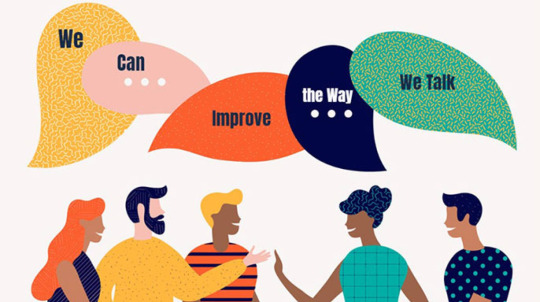
The first couple of lines had the speakers clearly declared. And, as they're the only two characters that are in the scene, it's natural that they'd each take turns--going back and forth in their conversation. Also, if this is in the middle of a book and you're used to how the characters talk differently, that can help too.
Just be careful to not rely on this back-and-forth effect for too long, because it will get confusing after a bit. Just pepper in something to remind the reader of whose turn it is--the character does something as they speak, or a simple dialogue tag is added. And the reader will keep up better.
52 notes
·
View notes
Text
Commas & Structural Punctuation
Commas can be a little hard to get your head around, as a writer. They are used for many different things to structure a sentence, so unless you're thinking about that structure, you can end up with commas all over the place.

Let's go over how commas affect the structure of a sentence, and how this relates to other punctuation...
The most obvious is to indicate an "aside" as I call it. When you use two commas, like this, what is happening to the text between the commas? It's almost like using brackets (like this) to whisper something related to the sentence in the middle of it.
The comma can also mark a continuation of the sentence in a slightly new direction, tagged onto the end like this. This is similar to a colon: which adds more information to what was said so far.
However, it can also be used after the introduction to a sentence like this.
An em-dash (or long dash) can be used the same way—as an aside—in the middle or end of the sentence. It may be easier while writing to use two dashes--which are easier to type--and then go back and swap them out before printing.
"The em-dash can also be used to show something—" "Being interrupted by something else."
For example, when dialogue or narration is stopped short by some event, or another person speaking over them.
A list of items can be separated by commas such as item 1, item 2, and item 3. The comma before the final item and the "and" is called the oxford comma, after the Oxford Style' Guide's recommendation to use it. Some writers avoid that, which is recommended by the Associated Press Style. As long as it doesn't confuse the reader, you can do whatever feels natural to you.
A semi-colon is something different altogether; it joins on another complete sentence to the first that's related to it. As opposed to the colon or comma: which joins on a continuance to the sentence that's related to it.
A "full stop," or "period," leaves two sentences separate from one another. The sentences might be closely linked. They may even continue the same thought, really--like that one did.
That said, depending on your writing style or the way a character speaks, the rules about "complete sentences" can be pretty loose and casual. As long as it's not confusing, and an "incomplete sentence" continues a complete one, you should be okay.
Dialogue may contain a complete sentence, which would normally end with a full-stop. But if the sentence in general continues—with a dialogue tag indicating the speaker, for example— When a full-stop would be used at the end of a sentence as part of dialogue, but the s
"The time is six thirty-two," said the clock.
Read more about sentences here: Breaking Paragraphs and Splitting Sentences.
And an ellipsis (or "dot dot dot") lets something trail off… And maybe get picked up again later. Or to denote a pause. This is most common in dialogue, though you may choose to use it here and there in narration too if that's your style.
Just be careful to not just throw it in all over the place. A full-stop is a pause too. And a comma can be a pause. Be sure to use it when it's necessary to add to what the reader understands from the text. Use it when it adds to the story, not just any time someone takes a breath.
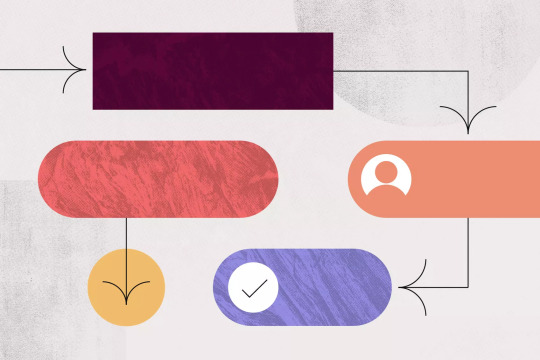
However, these different ways of using the comma can be confusing. The comma can be used for many things, things other punctuation can do just fine, including asides, lists, and related ideas, but also to join on new thoughts, like this. Now... how do you think that sentence was structured?
Main sentence: "The comma can be used for many things"
Aside: "things other punctuation can do just fine"
New direction: "including" a list:
"asides"
New item: "lists"
New item: "related ideas"
New direction: "but also to join on new thoughts"
Aside for the second part: "like this."
And how easy was it to figure out how it was structured as you read it? The reader doesn't know ahead of time what the structure is going to be, so they will rely on context clues to read the commas—which may be incorrect or misleading.
"The comma can be used for many things" (the main sentence). Then a comma, most commonly used to have an aside/new direction to the sentence.
"things other punctuation can do just fine". This could be an item list in theory, or maybe more likely it's an aside from the first part. This isn't completely clear, though.
"including asides". Another comma. This could end the aside and go back to the main sentence; or maybe "asides" is the first item in a list, and we're going onto a second comma.
"lists". With another comma. As that was so short, this is probably a list item, and the comma indicates it'll be followed by another item. So then "asides" was actually the first item of this list! If we guessed wrong, we've got to restructure the sentence in our minds.
"related ideas". Another comma, so this is probably going to followed by another item and the list will continue.
"but also to join on new thoughts". It doesn't really fit with the list, as this is a contradictory "but" phrase. Although this new comma could mean another item is coming, so maybe this is part of the list?
"like this." Ah, so that looks a lot like a simple aside tagged onto the previous "but" phrase. So the list wasn't continued after all.
It's kind of hard to reason about when you go word by word, comma by comma, isn't it? Your brain works fast, but it still has to do that processing. And still has to re-structure things if it went down the wrong route. This kind of thing is why sometimes you need to re-read a sentence once or twice; your brain got a bit lost in how it was structured in the first place.
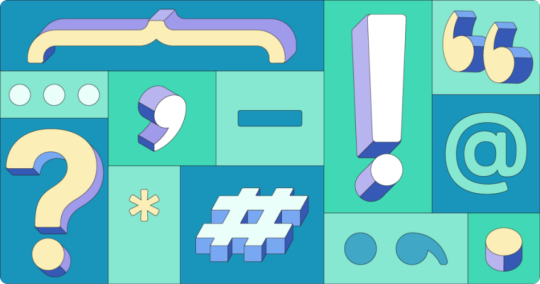
This is why those other structural punctuation marks exist; to let us more explicitly structure the sentence without ambiguity. If we go full-on with using those instead, the sentence could look like this:
The comma can be used for many things (things other punctuation can do just fine), including: asides, lists, and related ideas—but also to join on new thoughts, like this.
Which can come off as more "formal" in style, as if written in a business document. But that's because it's explicit about its meaning.
And notice, I still used commas. But now, they are used within clearly marked out areas, so their meaning is clear. The one after "asides" is between the semi-colon and em-dash, and it's quite easy to see that the commas in that part are separating items. Whereas the one used before "like this" at the end is within a section between the em-dash and full-stop. And through the context you can pick up that it's a little aside.
For a more casual style, such as writing fiction, you don't need to use this explicit punctuation everywhere. Commas are just fine. Just be mindful of keeping it clear what they're doing, so the reader doesn't have to spend time and energy figuring it out.
#comma#punctuation#grammar#sentence structure#writing#ellipsis#ellipses#colon#semi-colon#full-stop#period#reblog
10 notes
·
View notes
Text
Freewriting Exercise to Stretch the Writing Muscles
This exercise helps you get used to writing, and get used to not judging or editing yourself while writing, to let the words flow.
People can find it hard to get back into writing after a hiatus, or struggle to write more than a few words before they start nit-picking their work. This is even good for people who have never done creative writing before!
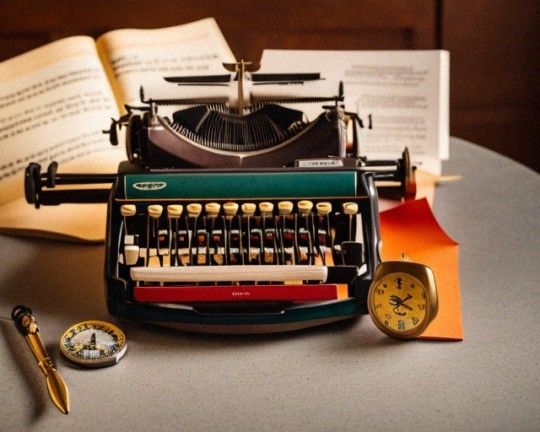
Start a 5 minute timer. (An easy way of doing that is searching Google for "5 minute timer" and it'll start one!)
Write. Start with a word. Then another. Keep writing, and don't stop! It doesn't have to make sense, it doesn't have to be good, no one has to see it. You can't stop writing for more than a second for any reason! No time to think! (Not sure what to write? Pick something you see and begin describing it. Or look up a short prompt and use it as the first words. Just continue the sentence!)
When the timer goes off, you're allowed to stop. But if the feeling takes you, just carry on as long as you feel like it.
If able, try handwriting instead of typing. Handwriting is slower, so your brain has more time to mull over what to write next.
When doing the exercise in a group, you could read what you've written out. As you listen to what others have written, look for good things to point out. (They'll probably only notice the bad.)
If you manage to do this once a day, you'll build up "muscle memory" of sitting down to write and actually writing for a good amount of time instead of your editor-brain interrupting.
Maybe you like what you wrote enough to edit it, or expand on it. Who knows? In one of these freewriting sessions, you may come up with some interesting ideas for your next story!
27 notes
·
View notes
Text

New art prompt: draw your OTP as this scene.
#Otp art#Otp art idea#Otp prompt#artists on tumblr#tomodachi life living the dream#tomodachi life#reblog
32 notes
·
View notes
Text




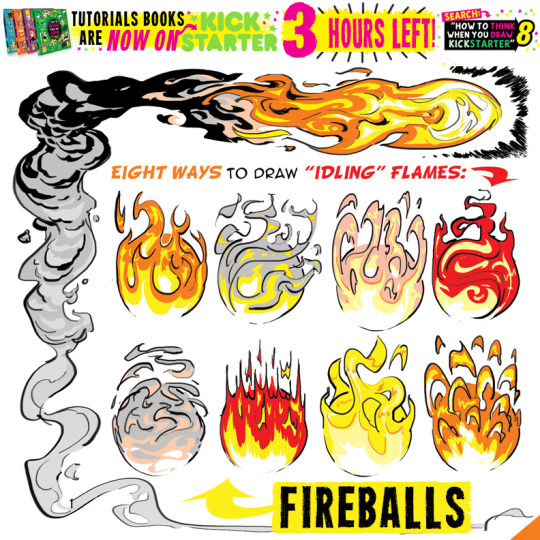



JUST FIVE LEFT until ALL my How to THINK BOOKS SELL OUT on KICKSTARTER - so grab yours now, before they all go, only HERE!
NEVER IN SHOPS!
Lorenzo!
226 notes
·
View notes
Text
How to put “wrote fan-fiction” on your résumé:
Leveraged an inventory of established fictional character and setting elements to generate a disruptive custom-curated narrative entertainment asset.
216K notes
·
View notes
Text
why you should make a webcomic and why you can make a webcomic
why should you make a webcomic?
it’s regular drawing practice
you get to draw and develop the universe your OCs live in
you could draw your OCs making out with context
see number 3
how can you make a webcomic?
make a new tumblr
install this theme https://www.tumblr.com/theme/37061
post comics as you would on any other tumblr they show up on their own webcomic site
what if nobody sees my webcomic :(
too bad you got to draw your OCs making out and nobody can appreciate your artistic genius obviously the world is not ready for this webcomic genius
197K notes
·
View notes
Text
We need to bring back the athletics body type post
113K notes
·
View notes
Text
tips for getting people to like your ocs
*disclaimer: this is based on what’s worked for me, aka an artist that likes to make comics/storyboards. so this advice is directed at people who do that
you can do things like this:

Which is fun! Character sheets like this are great, especially for personal reference! But frankly, I don’t think most people engage with this (at least I personally don’t). You could have the coolest character in the world, but it will be harder for most people to feel invested when they’re presented so neutrally like this.
My main piece of advice is: get better at writing.
That might sound harsh when said like that, but let me explain what I mean! (Not trying to imply you’re bad at writing either!)
What I tend to do is just throw characters into situations with as little handholding as I can. Give enough context that readers can follow along, but don’t feel like they’re being explained to.
what can you learn about the characters through their designs alone? (age, personality, economic status, occupation, etc)
what can you learn about the characters’ relationship though their interactions alone? (are they close? familial? romantic? is there hostility? are they tense/relaxed?)
what are the characters currently doing? what were they doing previously (how long have they been talking)? what are they going to do next? can you convey this without dialogue?
how do they feel about what they are doing? are they content? focused? over/understimulated? would they rather be doing something else?
where are they? does it matter? would establishing a setting in at least one panel clarify the scene? is there anything in the enviroment that could tell some of the story?
what time of day is it? what time of year is it? what is the weather like?
Now, with all this in mind, I'm going to give you another example. I'm going to use completely brand new characters for the sake of the experiment, so you won't have any bias (aka I can’t use Protagonist from above, since you already know all about him).


Did this get more of an emotional response from you than the first example? Why do you think so? Who are these characters? How do they know each other? What else can you infer about them? What happened? Who is "she"?
Now, you don't have to actually answer all those questions. But think about them! You can tell people a whole lot about your characters without ever showing them a list of their likes and dislikes.
Obviously, comics aren't the only way to get people invested in your original characters! But regardless, easily digestible formats will grab people's attention faster than huge blocks of text, and comics are a lot less work than doing wholeass storyboards.
Now go and share your ocs with the world!!!
12K notes
·
View notes
Text
hot artists don't gatekeep
I've been resource gathering for YEARS so now I am going to share my dragons hoard
Floorplanner. Design and furnish a house for you to use for having a consistent background in your comic or anything! Free, you need an account, easy to use, and you can save multiple houses.
Comparing Heights. Input the heights of characters to see what the different is between them. Great for keeping consistency. Free.
Magma. Draw online with friends in real time. Great for practice or hanging out. Free, paid plan available, account preferred.
Smithsonian Open Access. Loads of free images. Free.
SketchDaily. Lots of pose references, massive library, is set on a timer so you can practice quick figure drawing. Free.
SculptGL. A sculpting tool which I am yet to master, but you should be able to make whatever 3d object you like with it. free.
Pexels. Free stock images. And the search engine is actually pretty good at pulling up what you want.
Figurosity. Great pose references, diverse body types, lots of "how to draw" videos directly on the site, the models are 3d and you can rotate the angle, but you can't make custom poses or edit body proportions. Free, account option, paid plans available.
Line of Action. More drawing references, this one also has a focus on expressions, hands/feet, animals, landscapes. Free.
Animal Photo. You pose a 3d skull model and select an animal species, and they give you a bunch of photo references for that animal at that angle. Super handy. Free.
Height Weight Chart. You ever see an OC listed as having a certain weight but then they look Wildly different than the number suggests? Well here's a site to avoid that! It shows real people at different weights and heights to give you a better idea of what these abstract numbers all look like. Free to use.
338K notes
·
View notes
Note
Headcannons for your favorite masked singer character?
You already know who this is, lol it’s Chameleon ;]
Easy! I have wayyy to many
-LOVES glitter, gems and jewelry
-Hates the chicken boi but chicken boi likes him
-Friends with all of the rappers, Frog, Dalmatian, etc
-Nickname is Cham, or Chammy and also hates everything the chicken boi calls him
-Sometimes just sleeps in the sun cause why not
-Has a very glittery motorcycle (I didn’t want to mention this but I did anyway)
-I don’t know why but is enemy’s with Orca in my AU?
-Likes throwing glitter everywhere in random houses so Black Swan and Seashell have to clean
-Very wealthy
-Sometimes like to brag about being 3rd place to other masks who got eliminated early
Ok I have much more headcannons but like, this is enough I guess
9 notes
·
View notes